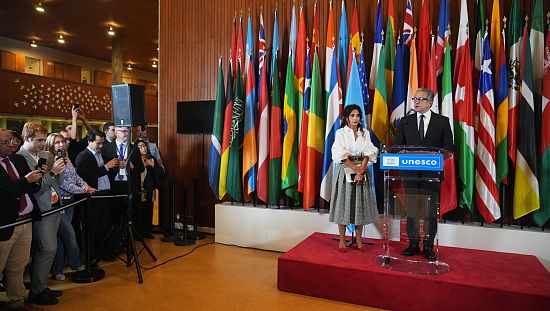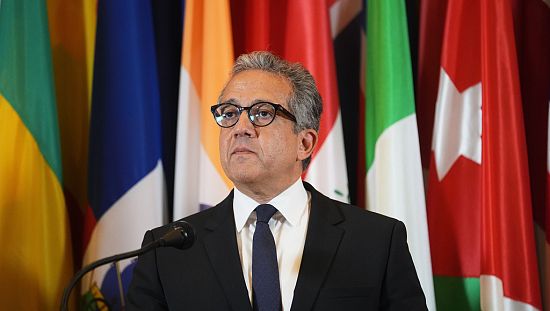Hundreds of residents of Timbuktu gathered at the Djingareyber Mosque to celebrate the 700th anniversary of this impressive earthen structure.
For the occasion, the city’s inhabitants are engaged in the restoration of the site’s plastering.
This UNESCO World Heritage site, located in the west of the ancient city, is in peril after being damaged and neglected during the 2012 occupation.
“Every year, we carry out maintenance work on the mosque, and all the communities and masons come out to do the annual plastering, but this year is exceptional as it coincides with the mosque’s 700th anniversary. So we are gathering to perform the same ritual and do the work to ensure its longevity,” explained the spokesperson for the corporation of traditional masons of Timbuktu.
Built in 1325 by the Malian Emperor Mansa Musa, the Djingareyber Mosque is made of banco, a material of packed earth. Its unique architecture earned it a place on the UNESCO World Heritage list in 1989.
“We are in 2025, and today we mark the 700th anniversary of the (Djingareyber) mosque, so to celebrate this anniversary we have combined the annual plastering and the celebration of the 700th anniversary, which coincides with Sunday, October 12, 2025,” said a Timbuktu librarian and event organizer.
However, the mosque and all other UNESCO World Heritage sites in Timbuktu were added to the List of World Heritage in Danger in 2012 following the city’s occupation by armed Islamist groups, who destroyed several cultural sites, including mausoleums and parts of the mosque.
“It is a cultural celebration, but it is also a celebration of social cohesion. Everyone participates—women, the youth, the elderly. Everyone is involved because it is also an initiation, a way to show future generations that this activity must be taken seriously,” stated the President of the Timbuktu Regional Council.
The municipal authorities’ celebration of the city’s 700th anniversary also aims to generate enthusiasm among Timbuktu residents for the UNESCO World Heritage sites.

